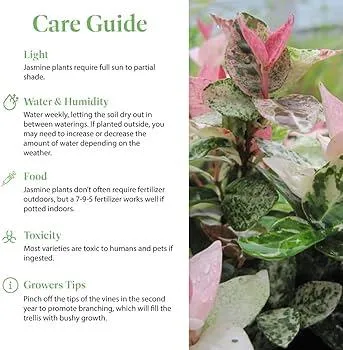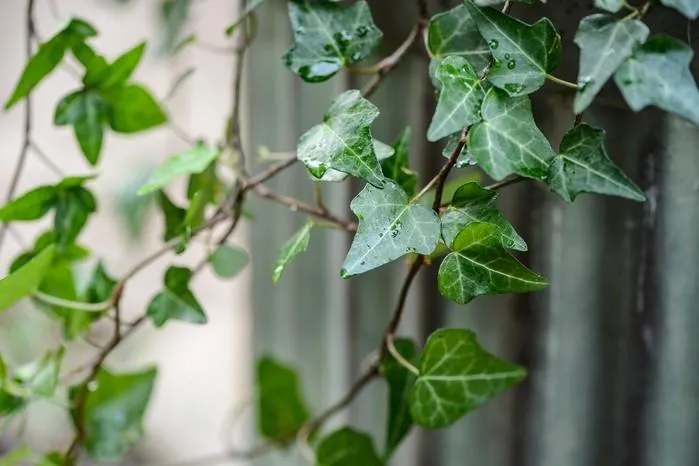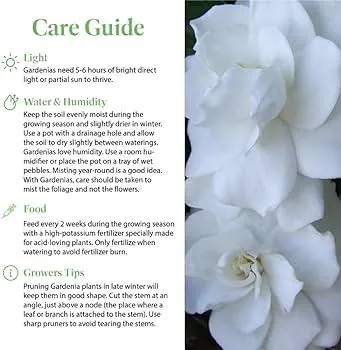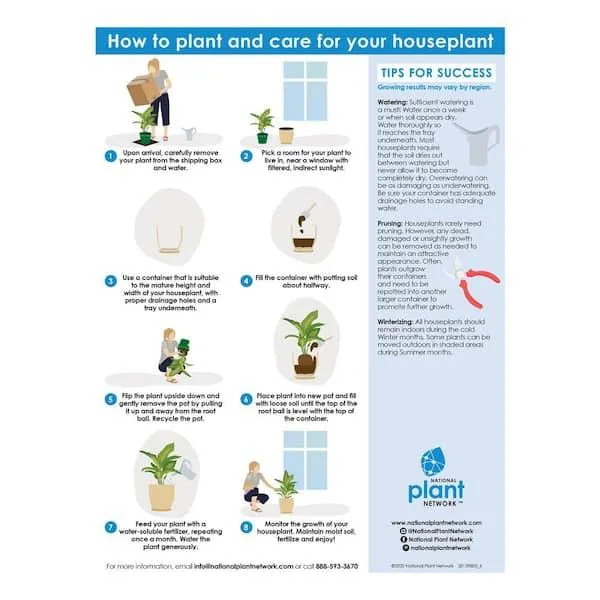
How to Care for English Ivy Plants: Watering, Sunlight, and Pruning Tips
The Complete Guide to Caring for Your Ivy Plant
If you’re looking for an easy-to-care-for houseplant that adds some style to your home, look no further than the trusty ivy plant. From my experience tending to various plants over the years, ivy is one of the hardiest and lowest maintenance options. With just a little know-how on ivy care, you’ll have a lush green friend to enjoy for seasons to come. Let’s explore the ins and outs of keeping your ivy plant happy and healthy.
Choosing an Ivy Variety
To start, you’ll want to pick the right ivy for your growing conditions. There are over 400 different ivy species to choose from, each with their own unique traits. Some common varieties found in homes include English ivy, Swedish ivy, and grape ivy. English ivy tolerates low light well but can be invasive if you let it vine outdoors. Swedish ivy is perfect for bright, indirect light and adds lovely scalloped leaves. Grape ivy has tiny leaves and requires more sun. Kind of depends what vibe you’re going for, eh?
I personally find grape ivy to be super cute in a sunny window. But it’s not for everyone – those tiny leaves mean more work keeping it pruned. English ivy strikes a nice balance of hardiness and low maintenance qualities. Then again, the scalloped leaves of Swedish ivy look stunning kinda cascading over a bookshelf. Tough call!
Light Requirements
When it comes to light, ivy is surprisingly adaptable. It can tolerate low light conditions very well, from medium to bright indirect sunlight. However, ivy will grow and thrive best with adequate illumination. Basically, avoid putting it in a dark corner if you want a full, lush appearance. On the other hand, too much direct sun might burn the leaves. I’ve found east or north-facing windows provide just the right amount.
The type of ivy also influences lighting needs. As mentioned, grape ivy favors brighter conditions compared to English ivy. Experiment a bit to see what light level makes your specific ivy variety happiest. Its growth and appearance will tell you if it’s getting enough sun. I think ivy is sort of the “Goldilocks” of houseplants when it comes to finding that just right lighting sweet spot!
Watering Tips
In terms of watering, another major key with ivy is to let the soil dry out between waterings. It’s a common misconception that houseplants always need moist soil. But too much water is sure to lead to root rot. Here’s a useful trick: stick your finger an inch into the soil. If it’s dry, it’s time to water. If not, hold off for another day or two. Ivy can handle brief periods of dryness much better than wet feet.

As for how much water, aim to thoroughly soak the soil until it drains freely from the drainage holes. Then pour out any excess water collected in the saucer. In drier indoor climates or winter months when plant growth slows, you may find your ivy only needs water every 10-14 days. In warmer spots or during active growing periods, weekly watering does the job. Trust your ivy to tell you when it’s thirsty. Pay attention to signs like drooping or wrinkled leaves.
Another real-life tip from my experience – be careful not to get water on the ivy leaves as it can lead to brown spots. It’s always best to water at the soil level. On the other hand, misting leaves works great as an extra humidity boost.
Fertilizing
During the main growing season from spring through fall, apply a diluted liquid houseplant fertilizer every 4-6 weeks. I usually go with a water-soluble 20-20-20 formula. Feed your ivy a little plant food to keep it growing strong and leafy. But watch out – too much fertilizer can burn delicate ivy roots. Follow package instructions closely or risk ending up with an unhappy plant, if you know what I mean.
Stronger 10-10-10 or even 5-5-5 formulas work great too for diluting. Basically, you just want to give ivy a nutritious boost to fuel its growth without overloading the poor thing, right? Fertilizing during active periods supports new leaf production. Many major plant retailers sell affordable options. I swear by the Miracle-Gro brand, tbh.
Pruning and Training
As ivy grows, it may require occasional pruning or training to maintain a pleasing shape. English ivy can get rather leggy and gangly left to its own devices. Trim off long bare stems below leafy growth to encourage bushier plant form. This exposes fresh growth and removes any damaged areas.
Ivy types that vine or trail also love to be trained. Use smooth garden stakes or poles for the vines to climb. It looks amazing kind of draped artistically along a wall or up a moss pole. You can basically let your creative juices flow with all the potential styles. I bet a heart shape trained ivy would make the cutest Valentine’s Day gift, no?

While pruning, check for any signs of pests and diseased foliage. Remove and safely discard any affected parts. A few strategic snips go a long way in keeping your ivy full, lush, and looking good. It’s all part of the fun, if you ask me!
Identifying and Treating Pests
Unfortunately, even low-maintenance ivies aren’t entirely pest-proof. The most common critters to watch out for include spider mites, mealybugs, and scale insects. Spider mite infestations show up as tiny webs or stippling on leaves. Mealybugs look like cottony fuzz or secretions. And scale plagues ivy with hard, dome-like armor shells. Yuck!
Here are some effective natural remedies I’ve used over the years: Neem oil works well as both a preventative and treatment for mites and more. Mix with water and spray leaves and stems. You can also wipe down with an alcohol-water solution. Finally, insecticidal soaps dissolve icky pests on contact.
If your ivy gets badly damaged, remove and dispose of foliage. Spray or wipe down the entire plant and surrounding area. Isolate it for a bit too just in case. Usually one or two treatments does the trick. But stay vigilant, right? Gotta look out for our plant pals!
Proper Care Results
Give your ivy the TLC it deserves with prompt attention to watering, light, feeding, and pest prevention. In return, it will reward you with lush foliage and vigorous growth all year long. You may even find yourself snipping extra rooted stems every now and then to share or propagate new plants. Talk about a garden-fresh way to spread more greenery, amirite?
With minimal effort, ivy truly is one of the easiest and most durable houseplants around. Its hardy nature means even novice gardeners can enjoy success. Just follow these care best practices I’ve outlined. Soon enough you’ll be the proud owner of a beautiful, healthy ivy that adds fragrant verdant charm to your indoor space. Happy planting!

Ivy Plant Care Tips
| Light | Partial sun to full shade. Too much direct sun can scorch leaves. |
|---|---|
| Water | Keep soil moist but not soggy. Water less in winter when growth slows. |
| Soil | Well-draining, such as potting mix. Avoid soils that retain too much moisture. |
| Temperature | Between 60-80°F. Avoid winter drafts near windows or doors. |
| Pruning | Trim any weak or damaged growth in spring. Cut back heavily in fall if plant is invasive. |
| Pots | Use pots at least 6 inches wide. Repot every 2-3 years in early spring in larger containers. |
| Fertilizer | Feed monthly in spring and summer with balanced houseplant food diluted to package instructions. |
FAQ
-
How much sun does an ivy plant need?
Ivy plants need plenty of sunlight. They basically grow best in spots that receive direct sun for at least 6 hours a day. However, they can manage in partial shade if necessary. On the other hand, too little sun will cause the ivy to grow long and leggy as it reaches for brighter areas.
-
How often should an ivy plant be watered?
You’ll need to water an ivy about once a week in the summer. Dig your finger into the soil and water when the top inch becomes dry. They sort of don’t like getting soggy feet, so only water when the soil is mostly dry. Nevertheless, during winter you can cut back to every two weeks since they aren’t growing as quickly. At the same time, you want to avoid both overwatering and underwatering.
-
What kind of soil is best for ivy?
Ivy plants thrive in well-draining potting mixes. The soil should be rich, porous, and moisture-retentive. Something like a peat-based potting mix works well. You basically don’t want the soil to stay soggy after watering. Good drainage is kind of important so the roots don’t rot. A medium that dries out between waterings seems to make ivy happiest.
-
How do you fertilize an ivy plant?
During the growing season from spring to fall, you’ll want to fertilize your ivy about once a month. You can use a general all-purpose houseplant fertilizer. Dilute it to half the strength listed on the packaging and water as usual. The fertilizer will nourish the ivy and make it grow more lush and green. But is monthly fertilizing really necessary? Perhaps every other month would suffice to keep an ivy looking healthy.
-
How do you prune an ivy plant?
It’s a good idea to trim ivy back occasionally to keep it bushy and encourage new growth. Simply cut off the longer, more leggy stems near the base of the plant. This helps the ivy retain a neat shape. You can do the pruning pretty much whenever, like after flowering or to remove dead or diseased parts. Amazingly, ivy is very resilient and usually bounces right back after a trim. Just don’t overdo it or you may shock the plant.

-
What are the most common pests and diseases of ivy?
Mealybugs and spider mites sometimes bug ivy plants. You may see cottony or flaky spots on leaves and stems if these pests are present. To treat them, you can wipe leaves with a cotton ball dipped in rubbing alcohol. Another common issue is root rot from soggy soil conditions. Make sure your ivy has good drainage to prevent this awful problem. Overall though, ivy is one of the sturdier and lower maintenance houseplants out there.
-
How do you propagate an ivy from cuttings?
Taking cuttings is a simple way to make new ivy plants for free! Just snip 4-6 inch stem cuttings in late winter or early spring, remove the bottom leaves, and stick them directly into damp potting mix. Manage moisture by not overwatering. Within a few months, you should see little roots and new growth. Soon you’ll have additional ivy plants to enjoy. Maybe I should try propagating some of mine!

